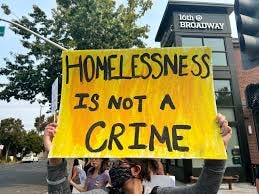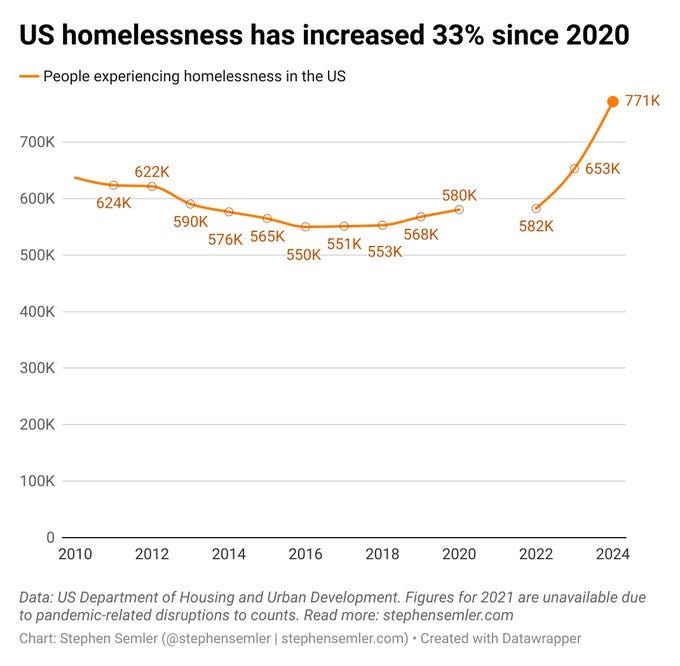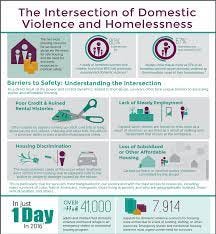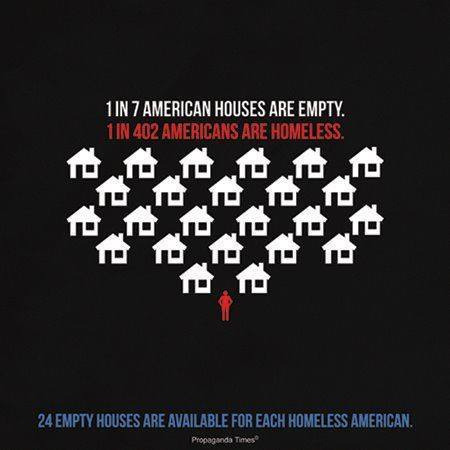America Has A Housing Problem, Not A Homeless One.
The Housing Issue In America Has Long Been Framed To Demonize The Victims.
In 2024, homelessness has reached a record number, continuing the upward trajectory it’s long been on. According to a report from the Department of Housing and Urban Development (HUD) those experiencing homelessness rose 18% from 2023, totaling 771,480. This breaks down to 23 of every 10,000 people in the wealthiest country in the world without a home.
But even this number fails to tell the full story. On page 11 of the report HUD states it excludes “People temporarily staying with family or friends—sometimes referred to as being ‘doubled-up’ or ‘couch surfing’—even if their stay may be unstable.” Also excluding those in shelters not designated as homeless shelters, even if its not a permanent residence.
And just a glance into the “Key Findings” section on page 5 reveals even more issues below the surface. African-Americans, who make up just 12 percent of the US population, represent 32 percent of the homeless population. One in five people experiencing homelessness is over the age of 55. The group with the largest increase in homelessness from 2023 were those under the age of 18.
And with this being stated, there is plenty of bipartisan propaganda going around about the homeless population. With Trump & Republicans quick to criminalize these people, often framing the issue to be one any given homeless person brought on themselves. But you also have democrats like Biden trying to blame migrants. So let’s debunk some propaganda, share some context, and see who’s really to blame for the housing crisis in America.
People Don’t Choose Homelessness.
I’ve always thought the idea of this to be absurd. The amount of homeless people living on the streets out of laziness is probably less than 1 percent. It amazes me how common this belief is however. Just on New Year’s Eve I was told by a conservative friend at least 90 percent of homeless people choose to be this way. So I thought putting some facts on the table before diving further in would be necessary.
Let’s start with the women. According to the National Law Center on Homelessness and Poverty, 1 in 4 women become homeless after experiencing domestic violence. Likewise, half of all homeless women report having experienced physical violence and 92 percent of homeless mothers report physical or sexual assault. Extensive research shows around 72% of homeless women suffer from some sort of disorder.
A Los Angeles study found that homeless women experience more gender based violence in a year than most women do in their life. Another effect most people don’t think of that was realized in a 2012 Minnesota Survey, 53% of women stayed in an abusive relationship or returned to one because they were otherwise homeless. 23% of homeless women had to commit sexual favors to receive shelter of any kind.
And its no different when men are added to the equation. Those in the homeless population are 2.5 times more likely to have a mental disability than someone with secure housing. But that’s not all, they are also 4 times more likely to have a physical condition. And as much as the right loves to pretend this is also a choice, the homeless population is 8 times more likely to have drug addiction problems than the sheltered population.
Which sure, you choose to do the drug the first time but what choice do you have after? If you choose to jump off a cliff, what choice do you have to stop falling when its a lot steeper than you originally thought?
And here’s maybe the most damming piece of information. An overwhelming amount of homeless people work. Actually, its estimated by the United States Interagency on Homelessness (USICH) that 40-60% of the homeless population works, but does so in area’s where the wages do not match the cost of living. 84% of low income families that could receive housing assistance currently do not.
I think through this it is clear to see how economics play a larger part in the housing crisis than personal choice or failure. This idea is part of the self-glorification capitalists love to indulge in.
The belief that they have all this money and success because they are innately good or better, and not that they exploited labor or inherited the success of course. And with this is the belief that those who failed are just innately bad, or didn’t try hard enough. When success in America, security under capitalism is more of a dice roll than a skills test.
We Prioritize Profit Over Necessity.
This part is the clearest reason why. Its the structure in which we divvy out housing, where those with money will always have priority despite those without money always having a greater need. It’s also economics 101, to drive up demand you limit the supply. Which is exactly what we’re seeing these massive investors do as they buy properties up in bulk just to hoard them.
Investor purchases have been growing, where in recent years they’ve made up as much as a quarter of all single family homes bought. According to RedFin, during covid when people were struggling and largely unable to buy homes, investor purchases increased over 80%.
While still only controlling a small percentage of the total market, this alone doesn’t tell the full story, as conservative try and use that to discredit the larger point. What this does is thins out the market in specific area’s, allowing for supply to be artificially lowered.
Imagine you are looking for a home in a city where Blackrock owns 20 properties, but only has one on the market. Not only does this direct you to this specific property, but they can then raise the prices on it as you don’t have other choices. They can then do this one at a time essentially maximizing the profit for each property while keeping them from those who may need them.
And we see this play out as Medium reports, there are currently 27.4 vacant properties for every 1 homeless person in America. Reporting on multiple homes has stalled recently, but in the 90s roughly 4% of the population owned 3 or more homes which equates to a little over 13 million people. If just 6% of these people gave away one of their 3 homes, leaving them with 2 properties still, that would be enough to ensure every homeless person a home.
This is an objective failure of economic policy. One that becomes increasingly more infuriating with knowledge of the aforementioned statistics. Why are 60% of homeless people working if there are 27 vacant homes ready for each and every one of them?
A topic for a different article is how we also dangle shelter as the “prize” at the end of a long process for these individuals with multiple hurdles for them to clear. Leading to less and less of them reaching the “prize” as each hurdle added is a roadblock for some. Which emphasizes the need for Housing First policies, allowing people to battle their demons and fix their problems with dignity and shelter. Not shamed and on streets braving the elements.











Very enlightening.